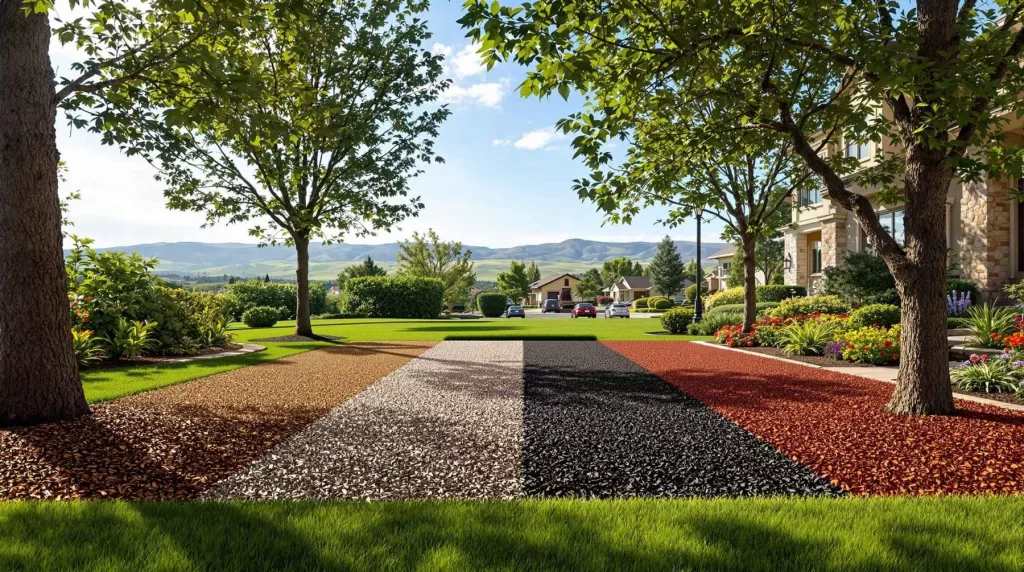
What Type of Mulch is Best for Castle Pines Landscapes?
Introduction Choosing the right mulch is more than just a visual decision — it’s a key part of protecting your plants, conserving water, and keeping
Castle Pines, Colorado, is known for its breathtaking scenery, rolling hills, and natural beauty. However, landscaping in this region presents unique challenges due to its semi-arid climate, variable temperatures, and complex soil conditions. Homeowners looking to create a beautiful, long-lasting outdoor space must consider these factors when planning their landscapes. Whether you’re designing a low-maintenance xeriscape, installing a lush lawn, or incorporating native plants, understanding the local environment is key to success.
In this guide, we’ll cover everything you need to know about landscaping in Castle Pines, including how to choose the right plants, improve soil health, and implement water-efficient landscaping strategies. Whether you’re starting from scratch or upgrading your existing landscape, this guide will help you make informed decisions for a thriving, sustainable outdoor space.
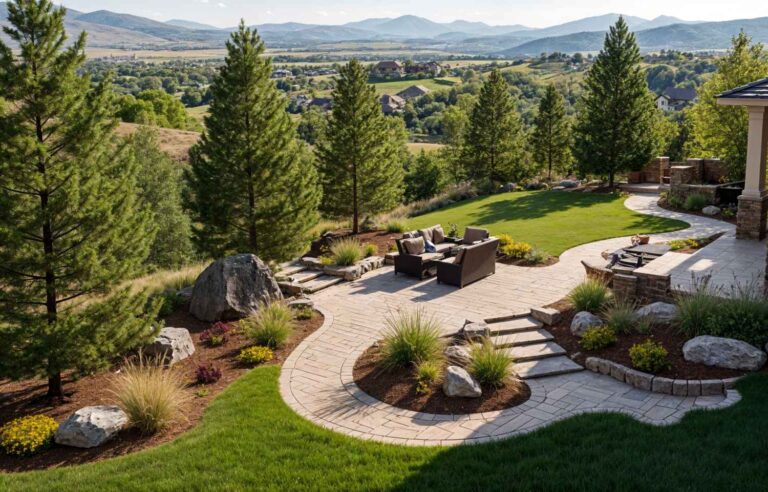
Castle Pines’ unique environment presents both opportunities and challenges for Castle Pines landscaping. With its high elevation, varying soil conditions, and semi-arid climate, designing a landscape that thrives year-round requires careful plant selection, efficient irrigation, and strategic planning. Homeowners and businesses must consider factors like drought resistance, erosion control, and seasonal weather shifts to create beautiful, sustainable outdoor spaces that enhance property value while blending seamlessly with the area’s natural surroundings.
Castle Pines offers a picturesque setting for homeowners, with its rolling terrain, towering pines, and stunning mountain views. However, creating a successful landscape in this environment requires careful planning and an understanding of local conditions. From extreme temperature fluctuations to soil composition and water conservation, every landscaping decision should be tailored to Castle Pines’ unique characteristics.
A well-designed landscape doesn’t just look beautiful—it thrives year-round despite Castle Pines’ semi-arid climate and variable soil conditions. Choosing plants that can tolerate dry summers, cold winters, and limited rainfall is essential to maintaining a vibrant and low-maintenance yard. Likewise, understanding the region’s heavy clay soils and drainage issues helps homeowners prevent plant failure and erosion problems before they start.
By selecting the right plants, implementing proper soil conditioning, and optimizing water efficiency, homeowners can create a durable, environmentally friendly landscape that complements their property’s natural surroundings.
This comprehensive guide will walk you through:
By the end of this guide, you’ll have a clear roadmap to designing and maintaining a landscape that not only enhances your home’s curb appeal but also thrives in Castle Pines’ unique environment. Let’s dive in!
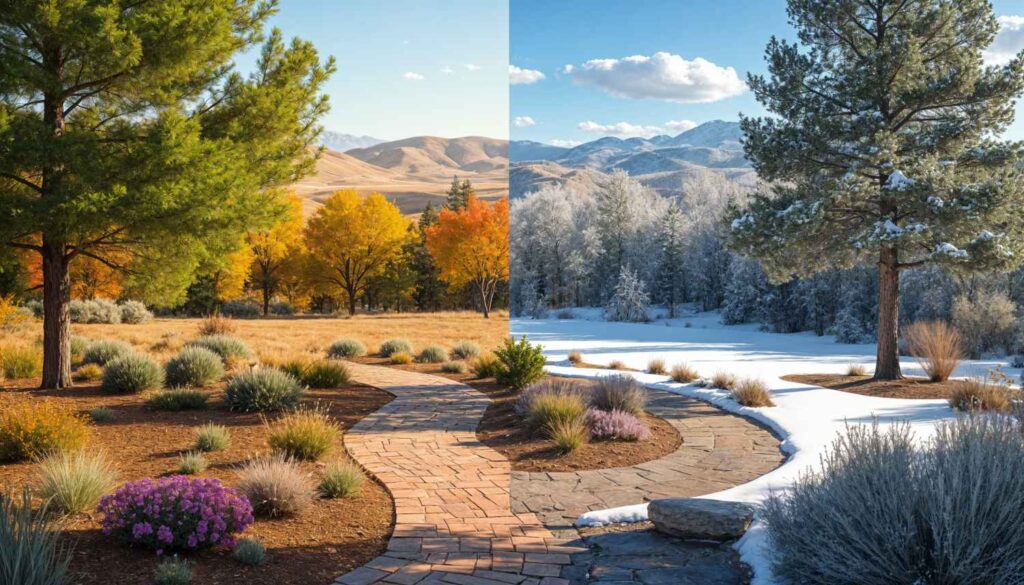
Castle Pines experiences a semi-arid climate with four distinct seasons, which significantly influences landscaping choices. The combination of hot summers, cold winters, and relatively low annual precipitation requires homeowners to select plants and materials that can withstand these conditions.
Castle Pines’ summer months bring intense sun and heat, while winters can be harsh with freezing temperatures and occasional snowfall. These seasonal extremes mean that plants must be resilient enough to survive both drought conditions and frost. Choosing native and drought-tolerant plants helps maintain a thriving landscape year-round.
With limited rainfall throughout the year, irrigation plays a crucial role in maintaining a healthy landscape. Castle Pines receives an average of 18 inches of precipitation annually, which is significantly lower than many other regions. This makes efficient irrigation systems—such as drip irrigation and smart watering schedules—essential for conserving water while keeping plants healthy.
Temperatures in Castle Pines can swing dramatically, with summer highs exceeding 90°F and winter lows dropping well below freezing. Plants must be selected based on their ability to withstand heat, cold, and sudden temperature fluctuations. Mulching and proper soil amendments can help regulate soil temperature and protect plant roots from extreme conditions.
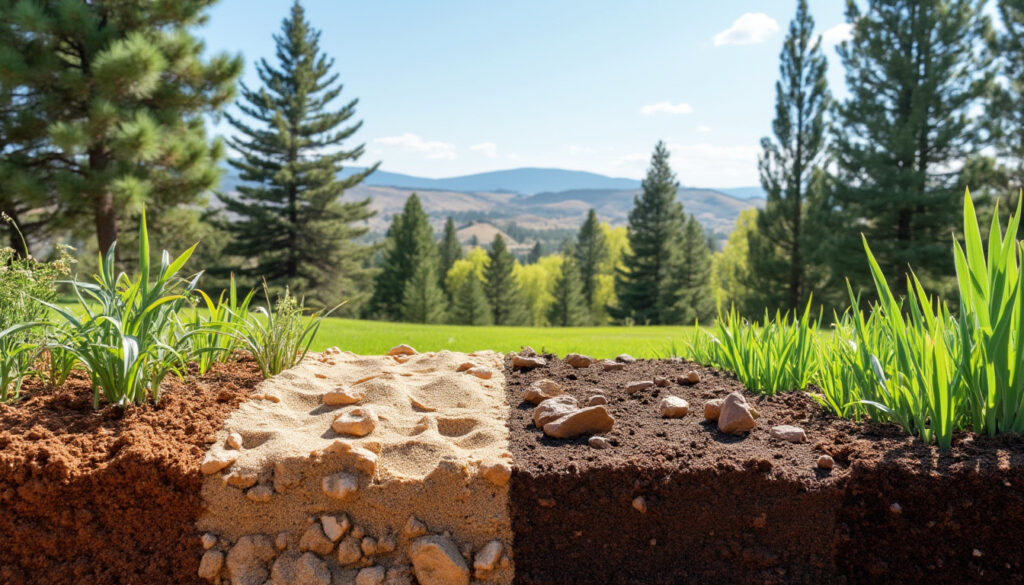
The soil composition in Castle Pines varies widely, with many areas featuring clay-heavy soil, rocky terrain, and poor drainage. Understanding how to amend and condition the soil is key to creating a fertile and sustainable landscape.
Castle Pines has a mix of clay, sandy, and rocky soils, which can present challenges for plant growth. Clay soils tend to retain water, leading to drainage issues, while sandy soils drain too quickly, requiring more frequent watering. Identifying your property’s soil type helps determine the best amendments and plant choices.
Clay soils, which are common in Castle Pines, compacts easily and drains slowly, which can cause root rot and poor plant health. To improve drainage, homeowners should incorporate organic matter, compost, and sand to create a looser, more aerated soil structure. Raised garden beds and strategic grading can also help manage drainage issues.
Before planting, it’s essential to test your soil’s pH levels and nutrient content. Simple soil testing kits can reveal deficiencies and indicate whether amendments like compost, peat moss, or gypsum are needed to enhance soil quality. By improving soil conditions upfront, homeowners ensure healthier plant growth and long-term landscape success.
Adding organic matter—such as mulch, compost, and decomposed leaves—helps improve water retention, drainage, and nutrient availability. Organic matter also encourages the growth of beneficial microbes, which enhance soil fertility and promote healthier root development.
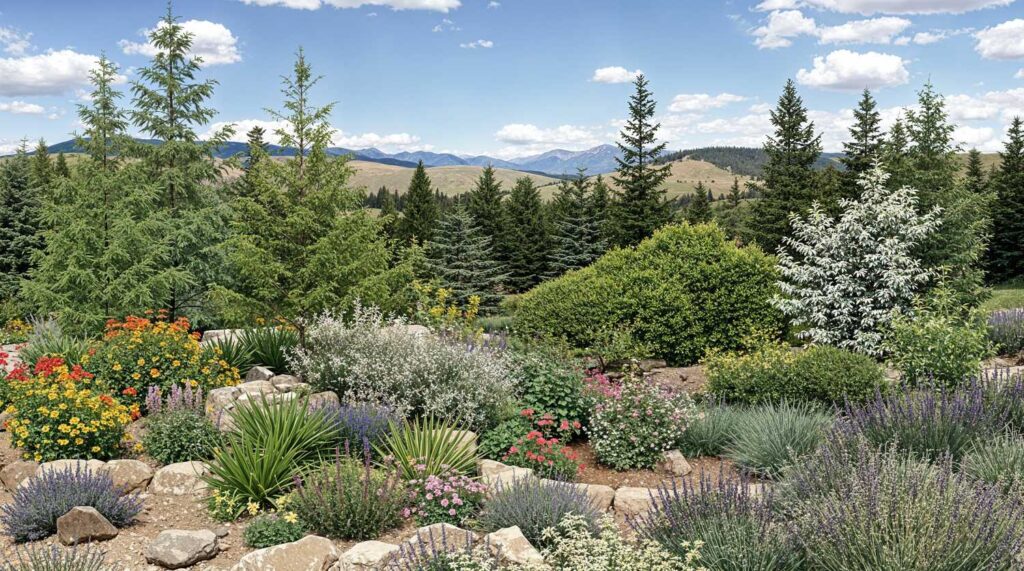
Selecting the right trees, shrubs, flowers, and ground covers is essential for creating a resilient, visually appealing landscape that thrives in Castle Pines’ climate. Professional plant installation services ensure that each plant is strategically placed and well-suited to the local environment, promoting long-term health and sustainability.
Since water conservation is crucial, drought-tolerant plants are ideal for Castle Pines landscapes. Consider native plants like blue grama grass, rabbitbrush, and Rocky Mountain penstemon, which require minimal watering and adapt well to local conditions.
Native plants are naturally adapted to Castle Pines’ climate, requiring less maintenance, water, and fertilizers. However, some non-native plants, such as ornamental grasses and select perennials, can also thrive when properly cared for. Striking a balance between low-maintenance natives and visually appealing non-natives can create a well-rounded landscape.
Homeowners looking for a traditional lawn should consider low-water grass varieties, such as Buffalograss, Kentucky Bluegrass, and Fine Fescue. These grasses require less frequent mowing and irrigation, making them more sustainable options for the region.
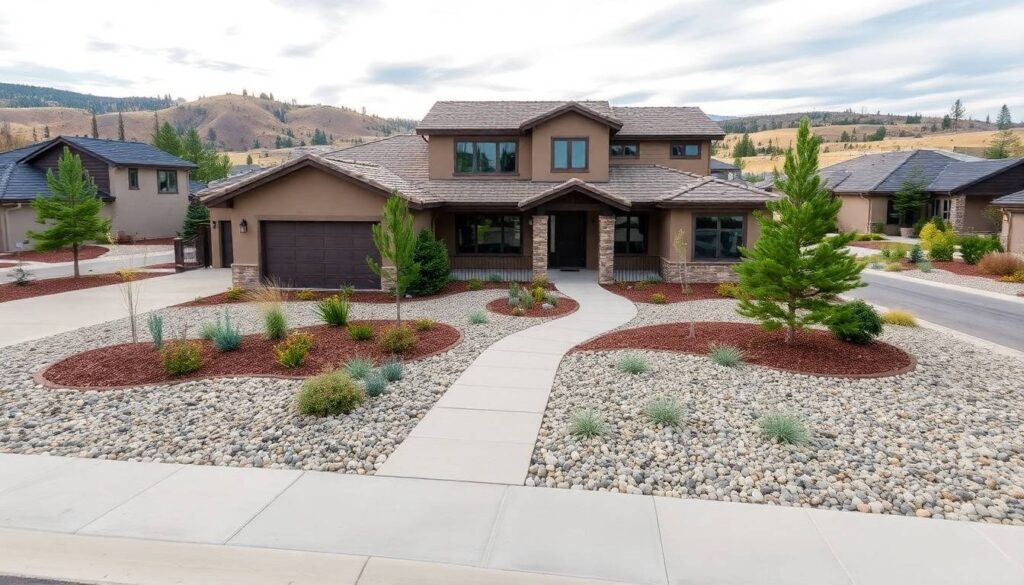
Water conservation is a top priority in Castle Pines, and Castle Pines Landscaping experts utilize smart landscaping techniques to help homeowners reduce water usage while maintaining a lush, healthy yard.
Xeriscaping is a landscaping approach that minimizes water use by incorporating drought-resistant plants, efficient irrigation, and strategic hardscaping. This method reduces maintenance, lowers water bills, and supports environmental sustainability.
Installing a drip irrigation system ensures that plants receive targeted watering directly at their roots, minimizing waste and evaporation. Smart irrigation controllers adjust watering schedules based on weather conditions, helping homeowners optimize efficiency.
Applying a thick layer of mulch around plants helps retain moisture, regulate soil temperature, and suppress weeds. Organic mulches like bark chips, shredded leaves, or straw enrich the soil over time, improving overall plant health.
Using rain barrels and rain gardens allows homeowners to capture and store rainwater for irrigation, reducing reliance on municipal water. Additionally, grouping plants based on their water needs—known as hydrozoning—maximizes water efficiency.
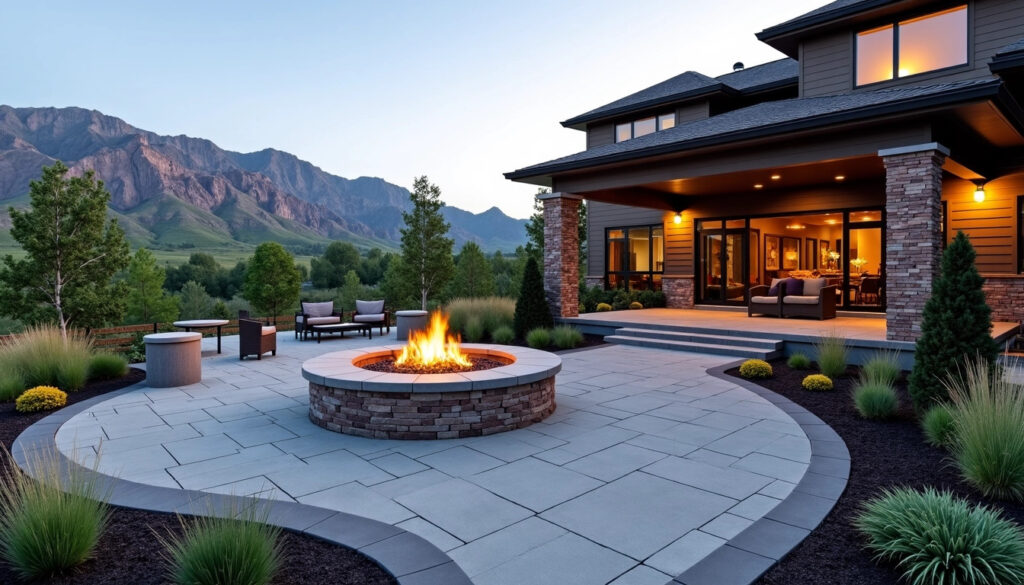
Hardscaping plays a crucial role in creating durable, functional, and visually appealing landscapes in Castle Pines. Thoughtfully integrating hardscape elements enhances both aesthetics and usability, providing defined spaces for outdoor living while complementing the surrounding natural environment.
When designing a hardscape, selecting the right materials is essential for durability and aesthetics. In Castle Pines, materials must withstand harsh winters, fluctuating temperatures, and occasional heavy precipitation. Some of the best options include:
Outdoor living areas extend the usability of a backyard, allowing homeowners to enjoy their space year-round. Fire pits, landscape lighting, and other enhancements add both ambiance and functionality:
Hardscaping should blend seamlessly with softscape elements like trees, shrubs, and flowers to create a balanced, natural look. Too much hardscape can make a yard feel harsh and uninviting, while too much greenery may lack structure and functionality.
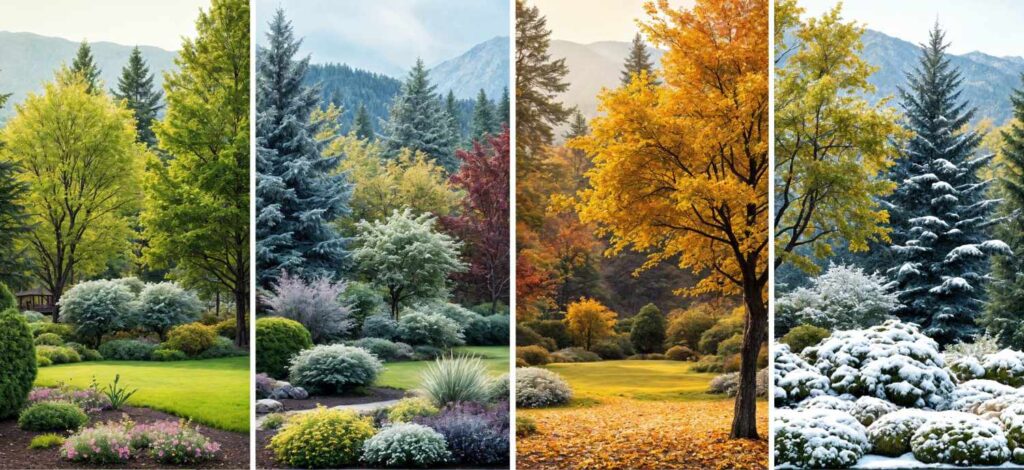
A thriving landscape in Castle Pines requires ongoing maintenance and seasonal adjustments to keep plants, lawns, and hardscapes in peak condition. With Castle Pines Landscaping expertise, homeowners can effectively adapt to weather changes, soil conditions, and potential pests, ensuring a lush and resilient outdoor space year-round.
Each season brings unique maintenance tasks that help keep plants healthy and vibrant:
Proper fertilization ensures healthy plant growth and strong root development. However, Castle Pines’ soil often requires specific amendments:
Pests and plant diseases can damage landscaping if not managed properly. Some common issues in Castle Pines include:
Castle Pines experiences temperature extremes, so proper preparation is crucial:
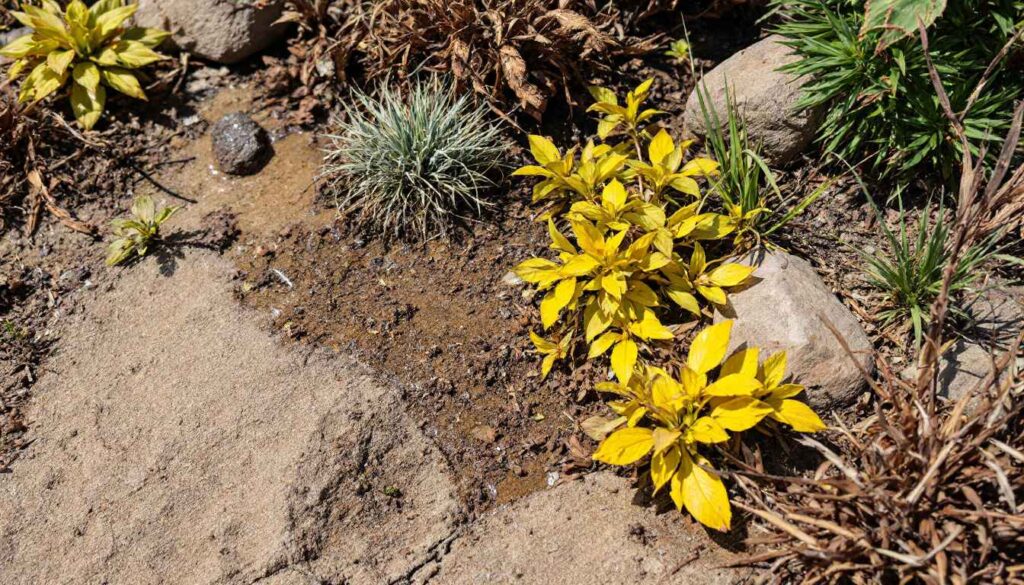
Even with the best intentions, homeowners often make critical landscaping mistakes that affect plant health and the overall aesthetic of their outdoor spaces.
Selecting plants that aren’t suited to Castle Pines’ climate can lead to poor growth, high maintenance needs, and eventual failure. Homeowners should:
Many homeowners overlook the importance of soil quality, assuming that adding plants and watering will be enough. To ensure healthy plant growth:
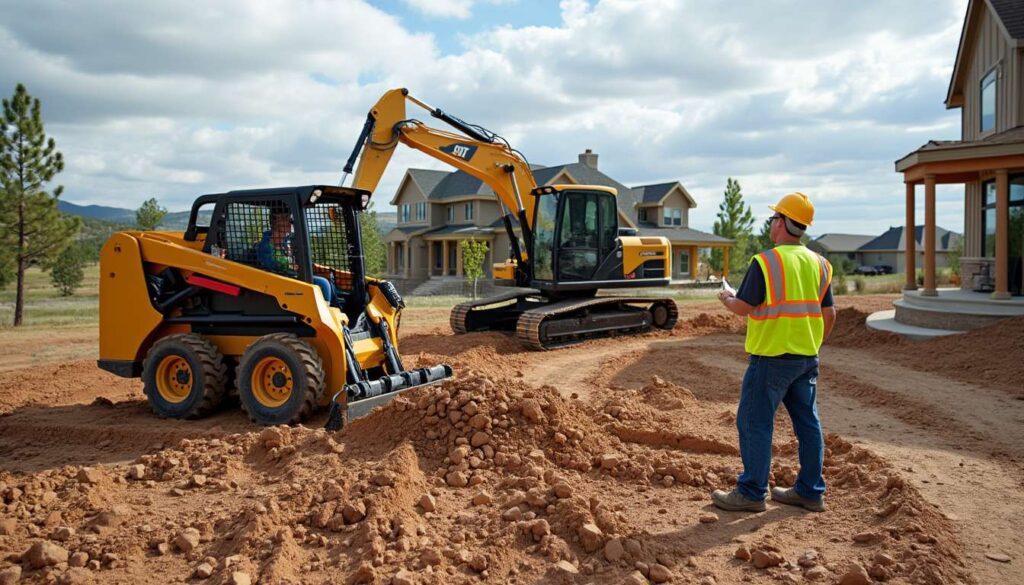
Creating a high-end, functional landscape in Castle Pines requires expertise, precision, and a deep understanding of the local climate and terrain. With Castle Pines Landscaping professionals, homeowners can achieve long-lasting beauty, efficiency, and increased property value without the challenges of DIY landscaping.
Many homeowners in Castle Pines purchase new construction homes with unfinished backyards, requiring a complete landscape design. Professional landscaping services are essential if:
Hiring a professional ensures that your outdoor space is designed with functionality, sustainability, and long-term value in mind.
Not all landscaping companies offer the same level of quality and expertise. When choosing a landscaper in Castle Pines, look for:
A trusted, experienced landscaper should not only meet these criteria but also provide seamless communication and expert guidance throughout the project.
At Custom Landscapes by Design, we specialize in transforming Castle Pines properties into luxurious, functional outdoor spaces. Our team has extensive experience designing and installing high-end landscapes tailored to the unique needs of The Canyons and surrounding communities.
We understand the challenges of landscaping in Castle Pines and offer high-quality craftsmanship, premium materials, and exceptional service to bring your vision to life.
A well-designed landscape isn’t just about curb appeal—it extends your living space, enhances property value, and creates a serene outdoor retreat. Investing in professional landscaping ensures your backyard is both beautiful and functional, built to last for years to come.
Choosing an experienced, full-service landscaping company ensures your outdoor space is designed with precision and care. Whether you’re looking for a modern patio, a fire pit for cozy Colorado evenings, or an eco-friendly xeriscape, a professional team brings expertise and craftsmanship to every project.
At Custom Landscapes by Design, we are committed to creating high-end landscapes that reflect your style, meet your needs, and thrive in Castle Pines’ unique environment. Whether you’re starting from scratch or looking to enhance an existing space, we’re here to help.
📞 Contact us today to schedule a consultation and take the first step toward a breathtaking outdoor space tailored just for you!

Introduction Choosing the right mulch is more than just a visual decision — it’s a key part of protecting your plants, conserving water, and keeping
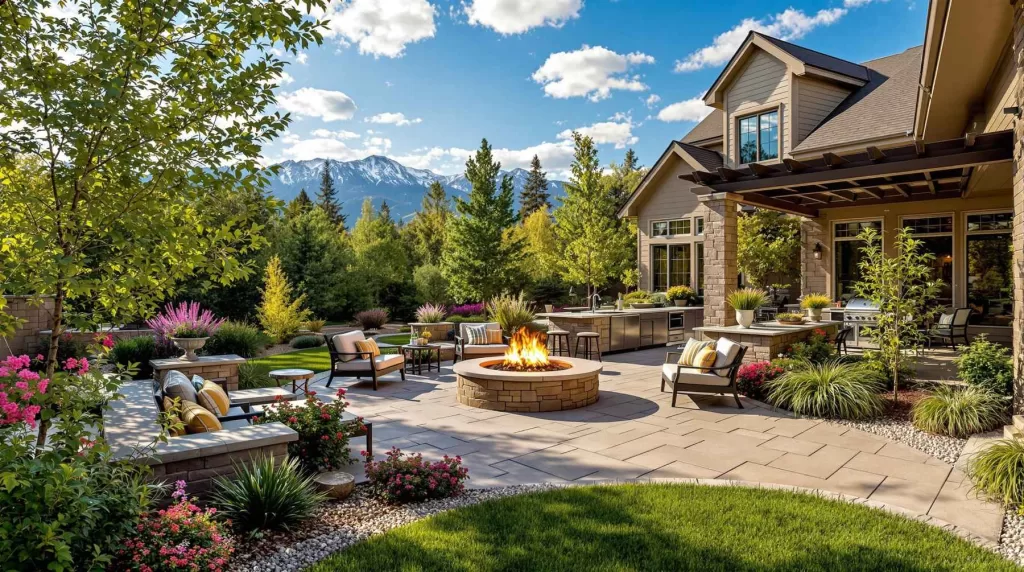
Introduction Castle Pines is home to some of the most breathtaking properties in Colorado — and luxury homeowners here expect nothing less than perfection in
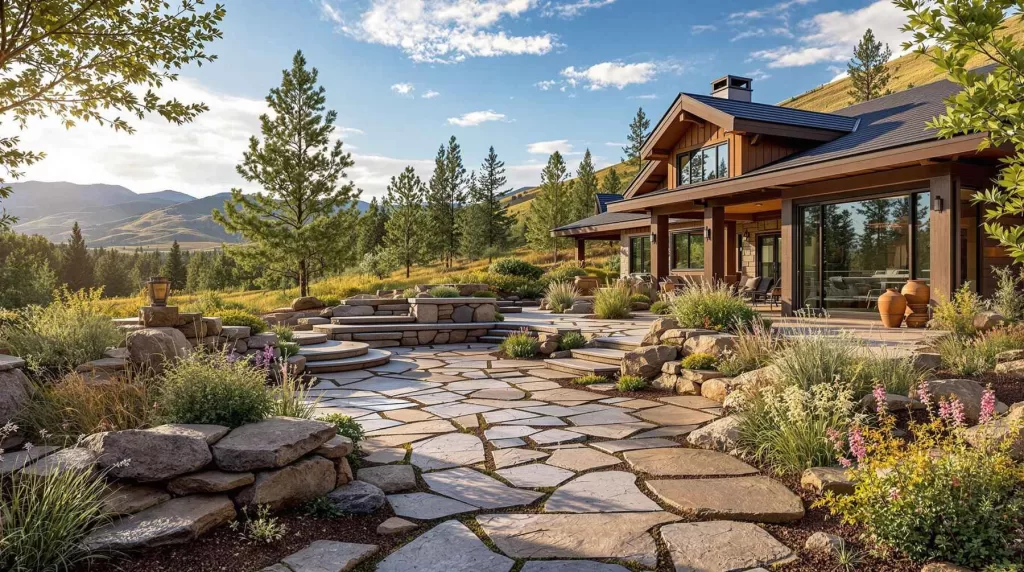
Introduction Natural stone has long been a favorite among Colorado homeowners for its durability, timeless appeal, and ability to blend seamlessly into natural surroundings. In
Fill out your details below and we will reach out to you for a free consultation!
Monday 9 AM – 5 PM
Tuesday 9 AM – 5 PM
Wednesday 9 AM – 5 PM
Thursday 9 AM – 5 PM
Friday 9 AM – 5 PM
Saturday: By Appointment Only
Sunday: Closed